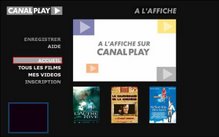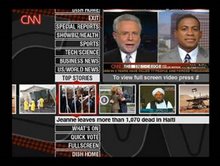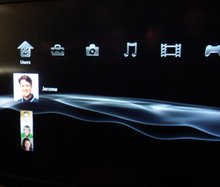There seems to be confusion over terminology relating to digital convergence. I offer my explanation of terminology below.
Extended-PC – A PC which ‘extends’ its value by networking to other non-PC clients around the house. The clients support entertainment consumption. The PC runs Windows XP or better. The Extended-PC can also network with other PCs.
Extended-Notebook – A Notebook which ‘extends’ its value by networking to other non-PC clients around the house. The Notebook runs Windows XP or better.
Extender – an entertainment client connected to an Extended-PC. In this case, the client uses Microsoft Extender middleware and the PC uses the Media Center Edition (MCE) OS.
- The UI of the Extender is identical to the 10’ UI of the MCE PC.
- A DMA, like an Extender, has only 10’ value – there is no keyboard or 2’ UI support.
- It primary function is to support the consumption of entertainment content
- As explained below (hybrid-Notebook), this is the ideal entertainment client for combining with a notebook.
PC Media Server – A PC placed at a 10-foot location such as a living room. It is controlled by an IR remote and has no keyboard or mouse.
- Lack of a keyboard means this PC has no 2-foot value - Consumers do not believe they are buying a PC.
- Use of the Windows Operating System (or MCE) means this platform has much of the maintenance requirements of a PC.
- This platform has the BOM (cost) of a PC but must compete with BOM of alternative 10’-only appliances or Extender.
- This platform is considerably more powerful and flexible than a traditional 10’-only appliance.
- Microsoft moved away from this idea when they dropped the 2-foot thin client (Mira) which was intended to be a companion to the PC Media Server.
- Clearly its 2-foot role requires it to have a keyboard.
- In support of its 10-foot role, its 10’ UI is controlled by an IR remote.
- The Hybrid-PC can be located in a living room and connected to a TV.
- If the TV is High-Def then the 2’ monitor is not needed to maintain the PC operation. (maintenance is a 2’ operation)
- Alternatively, the TV is not needed if the TV programs are presented on the 2’ monitor – student dorm-room style. (This hybrid form was the first way used to show-off the MCE. Microsoft can now use the Extender and Xbox360 to show the Extended-PC approach)
- A Hybrid-PC can also be an Extended-PC if it supports a 2nd 10’ UI via a networked Extender.
- Consumers believe they are buying a PC and are willing to pay for 2-foot value with the additional benefit of 10’ UI support.
- Notebooks are better suited to Extended-Notebook operation. Were the 10’ UI is projected to an Extender or other entertainment thin-client.
- A TV tuner can be added to a notebook, but it is difficult to deal with cable or satellite TV by this route.
- Like other hybrid offerings, there are a diminished number of users who want 10’ features built into a platform primarily purchased for its 2’ value.
- Currently, consumers find it easier to think of the 10’UI as extra TV channels.
X86 STB or x86 Media Server – This is the same hardware as the PC STB or PC Media Server, but the operating system is likely Lynx. Because the Windows OS is not used, consumers do not consider this to be a PC or have 2’ value.
- Without the Windows OS, this high-end STB is attractive to many users who don’t want the maintenance of a PC.
- What is left-out of a 10’ box is as important as what is ‘in’. Leaving Windows ‘out’ focuses the box on its 10’ usage. Similar thinking can be seen in Apple’s Front Row, were they left many 2’-like things out which appear in the MCE 10’ UI.
- It is also likely easier to convince the security minded, that an box not running Windows or supporting a 2-foot UI, limits illegal access to protected video content.
Media Center PC – Microsoft do not try and sell the MCE without promoting its 2’ value – it’s a not a dedicated 10’ appliance. So the Media Center PC is a Hybrid-PC if it directly supports a 10’ UI, or an Extended-PC if it projects the 10’ UI to an Extender.
10-foot box – a box in the living room connected to a TV controlled by IR remote.
2-foot experience – using a keyboard, mouse and PC monitor
Middleware – connects Extended-PC with entertainment client
H264 - emerging high-def video codec, which may replace MPEG2
High def TV - TV signal supporting 720p or 1080i TV picture
ATSC - Broadcast standard used for high def terrestrial TV in USA
DVB-t - Digital Broadcast TV in Europe using terrestrial signaling (antenna)
Comments, corrections and feedback appreciated.









No comments:
Post a Comment